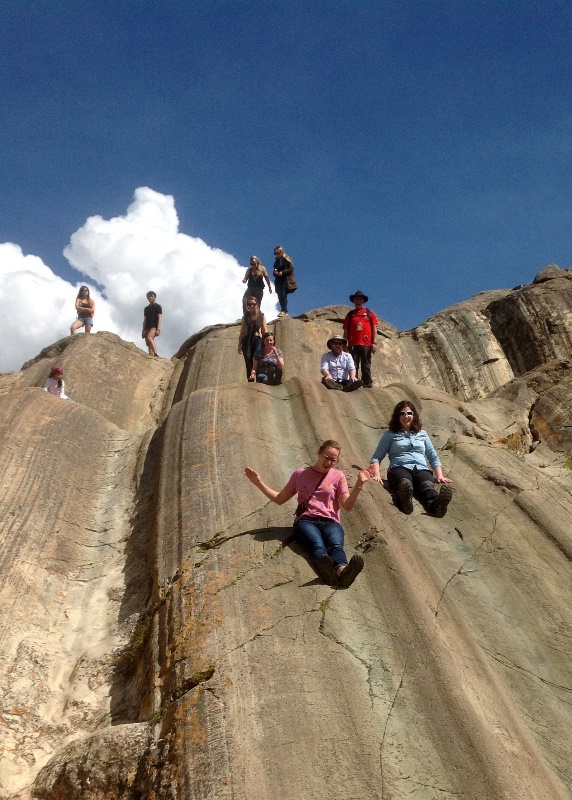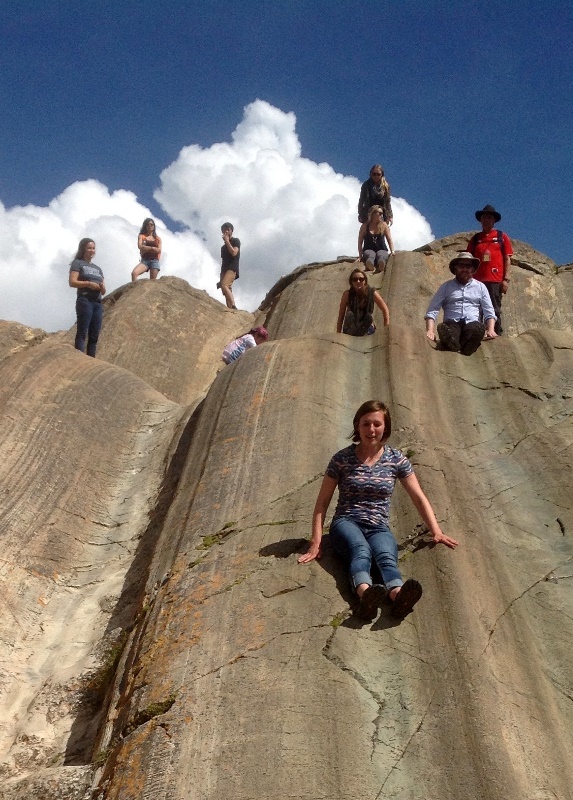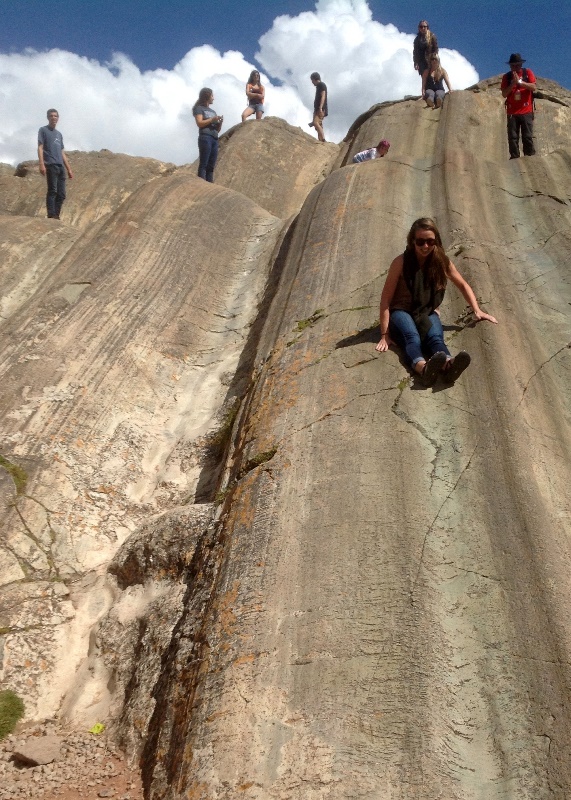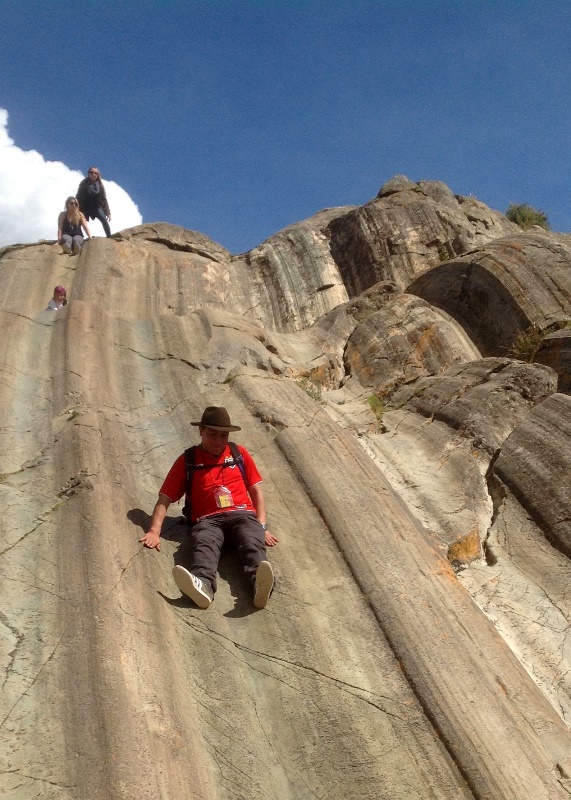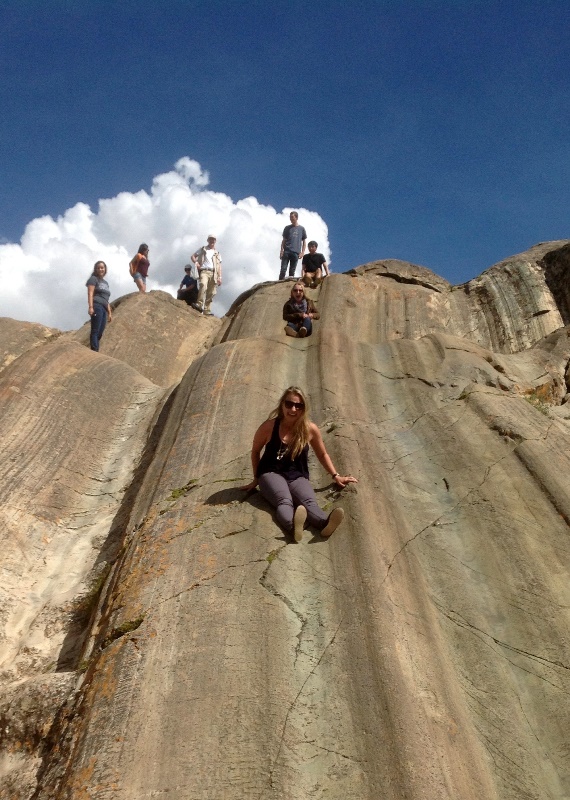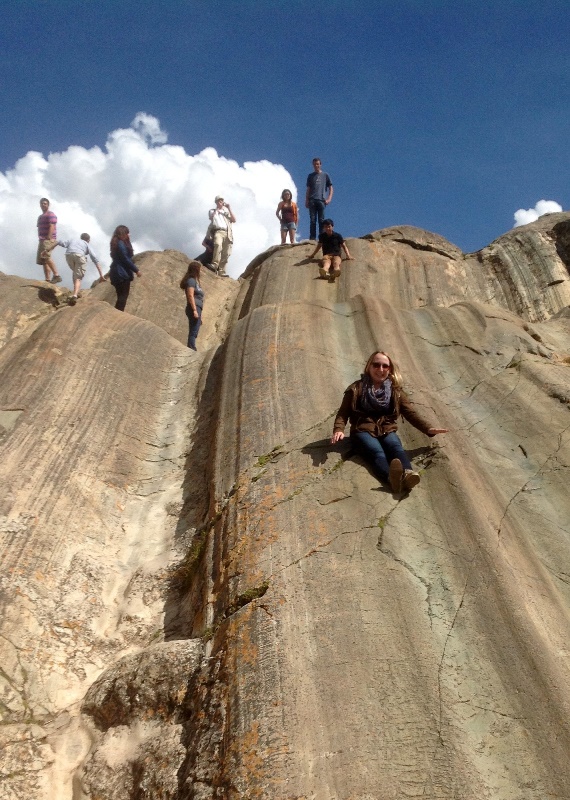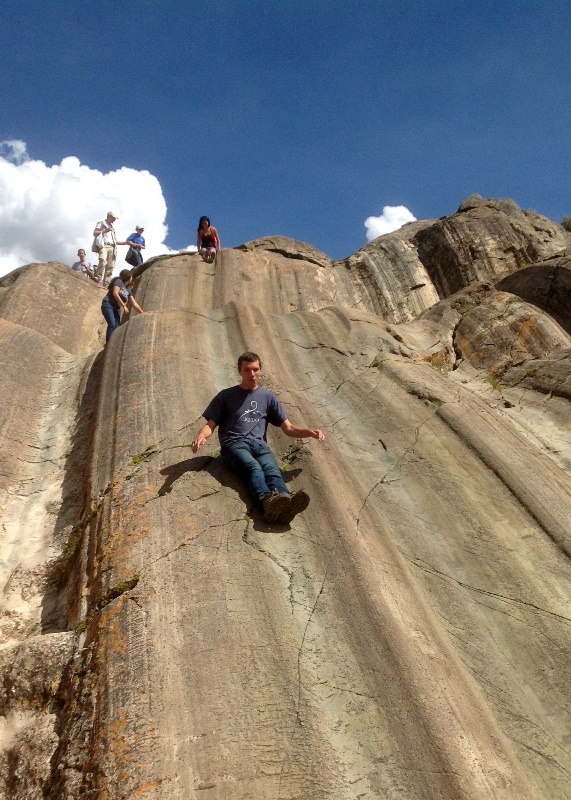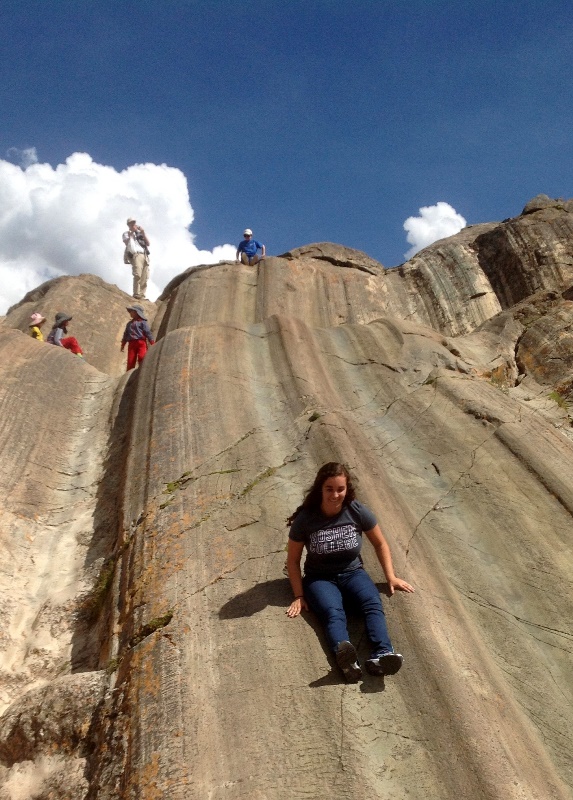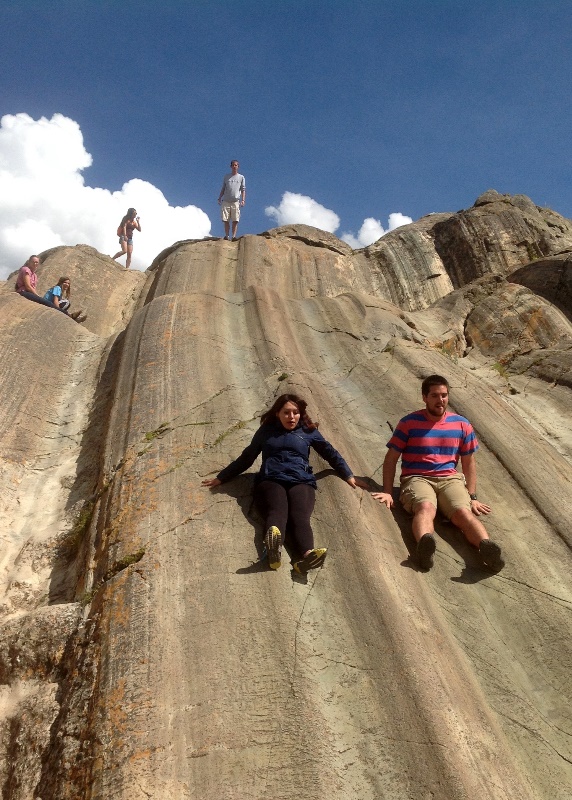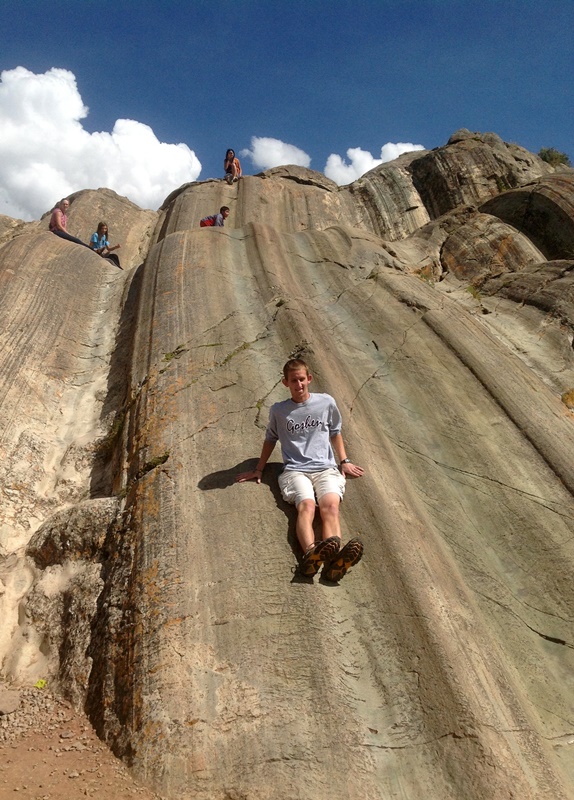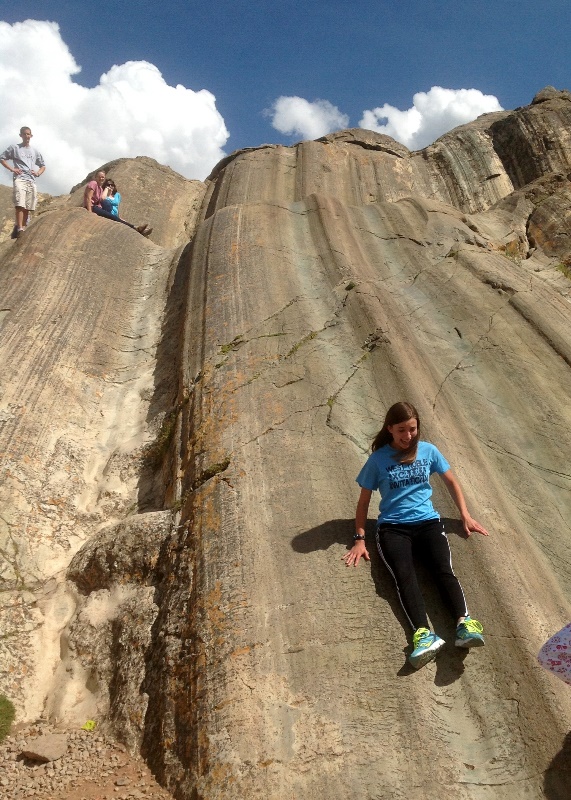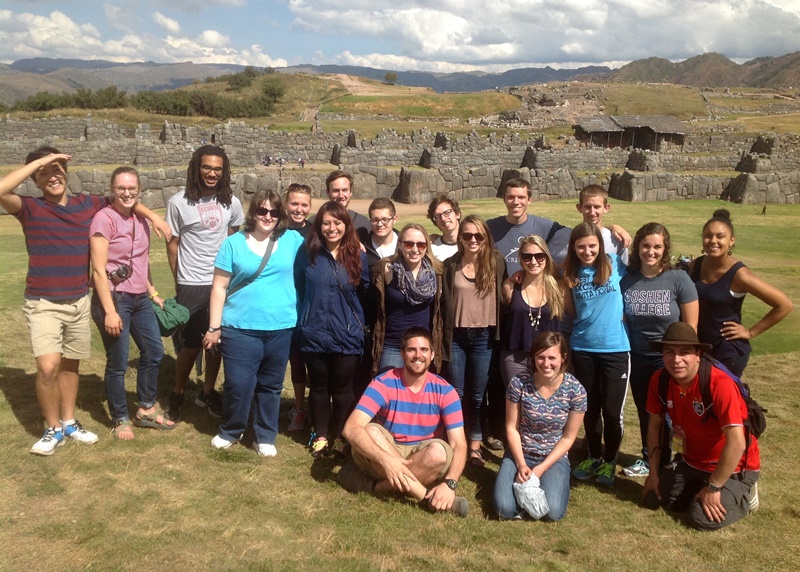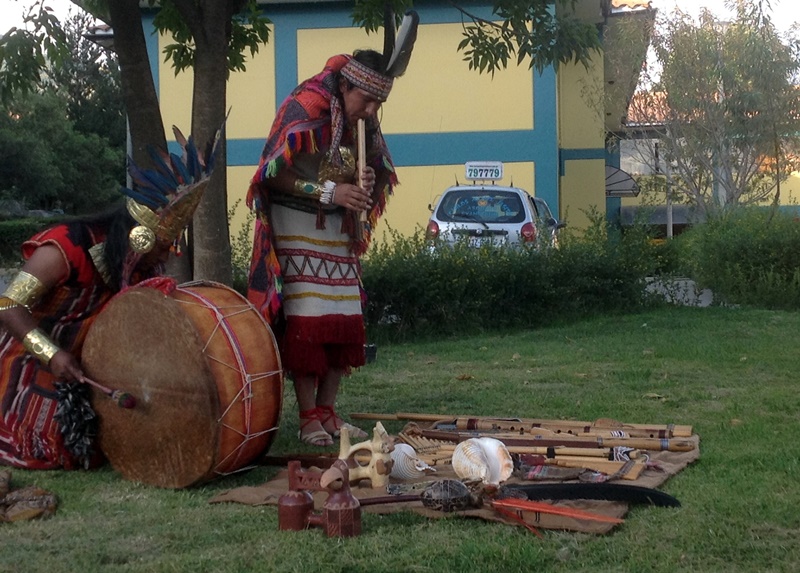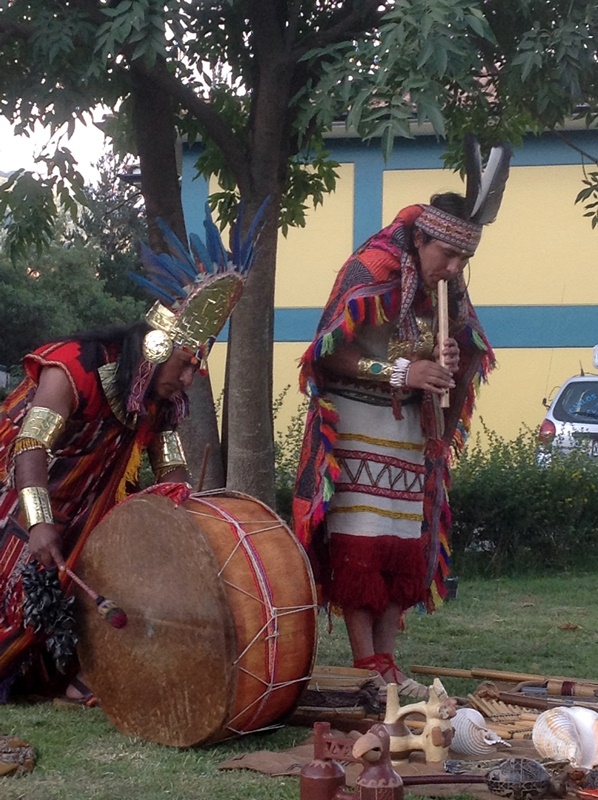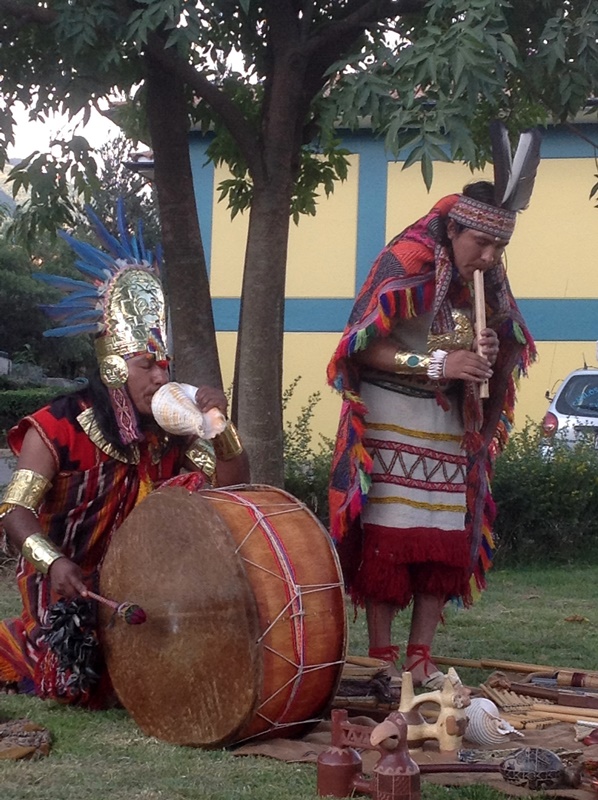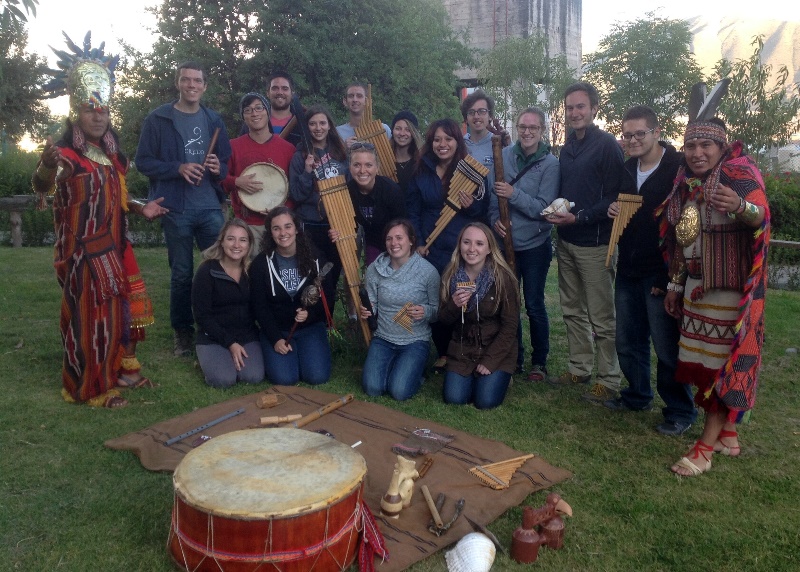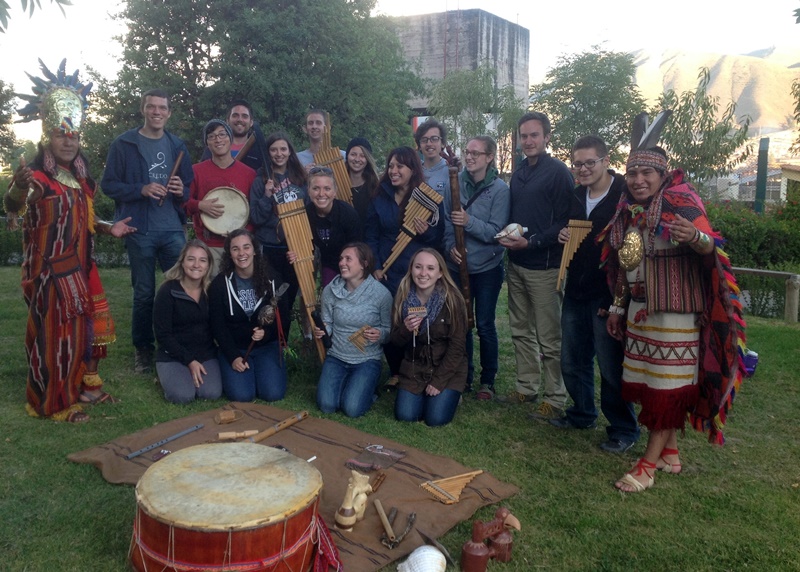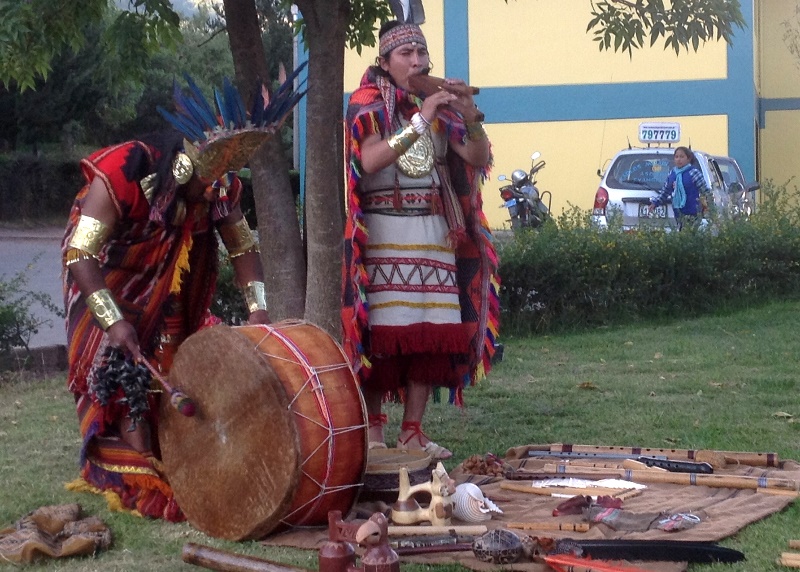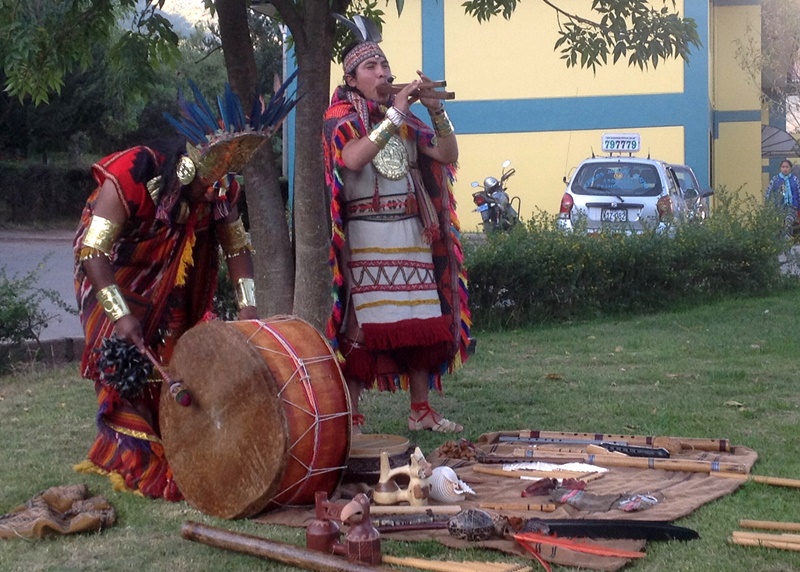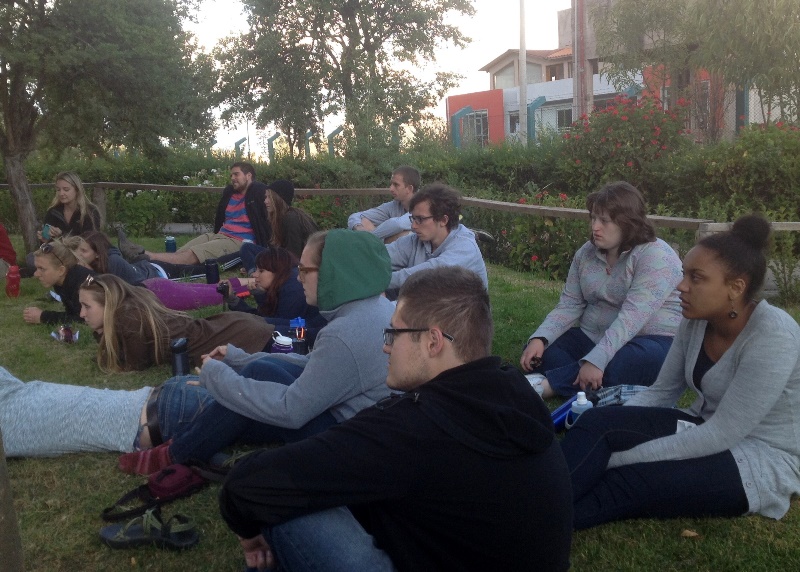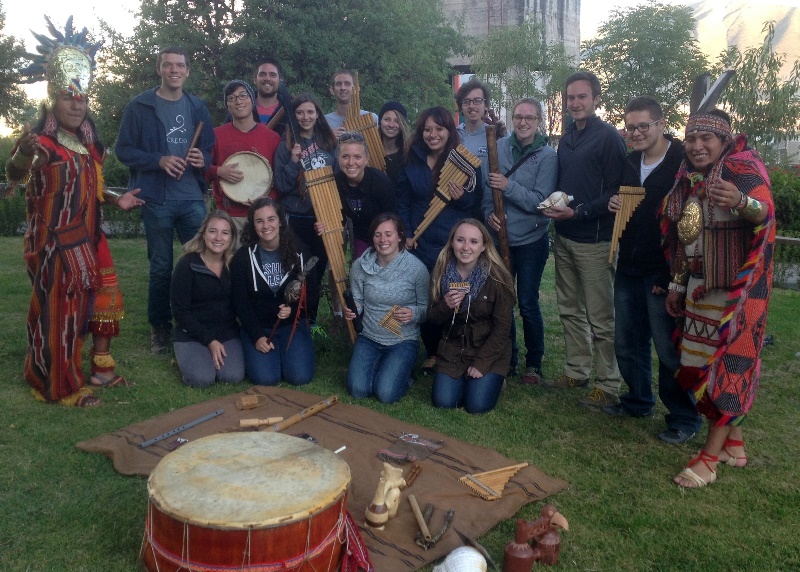Long Flight to Cusco
By Karen and Duane Sherer Stoltzfus
Peru SST Co-Directors, 2014-2015
We were scheduled to fly from Lima, the capital of Peru, to Cusco, the Andean capital known as “the navel of the world,” on a Friday afternoon. We had tickets to attend a folkloric dance show in Cusco that evening, as we planned to gently ease into nightlife at an altitude of 11,200 feet.
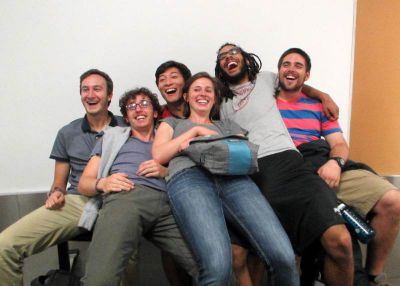
Our scripted plans began to unravel quickly at the Jorge Chavez International Airport. First, our airline, Peruvian, whose motto is “Puntualidad y Servicio,” or punctuality and service, informed us that they could seat only half of our group on the last flight to Cusco that day. The others would have to fly the following morning. We protested.
In the midst of this stressful moment, we were bustled out of the terminal, along with everyone else. The airport and the rest of the city temporarily shut down for an earthquake drill.
Eventually, a diligent ticket agent was able to secure seats for all but three of our students (and then went to the LAN ticket counter with cash in hand to buy three seats on a competing airline’s plane). We thought we were set.
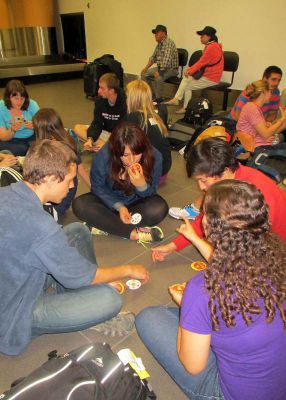
Minutes before boarding time, however, the airline announced that our flight had been canceled (the cause remains ambiguous). A somewhat chaotic scene played out at the check-in desk over the next few hours, including an argument among ticket-holders as to whether or not there was in fact an identifiable line of people waiting their turn or if what we had was just a massing. Eventually, Peruvian secured vans to take all of us to a hotel for the night, at the airline’s expense (suggesting the cause was not related to weather).
By 10 p.m., we found ourselves in the most unlikely of SST settings: in a four-star hotel called Meliá, featuring a gym, sauna and Turkish bath. We supped at a buffet, enjoying white linen tablecloths and all the water we could drink from pitchers (great for filling up water bottles). Students found bathrobes and slippers waiting in their rooms.
Of course, all good things must come to an end — and this one did very early. By 3 a.m. we were awake and headed back to the airport, this time successful in boarding our 5:30 a.m. flight. As if to test us one final time, just as we approached Cusco, our Peruvian Air pilot announced that weather would prevent us from immediately landing and we might be diverted to Arequipa. We circled for 45 minutes. Thankfully, the strong winds or other weather goblin relented.
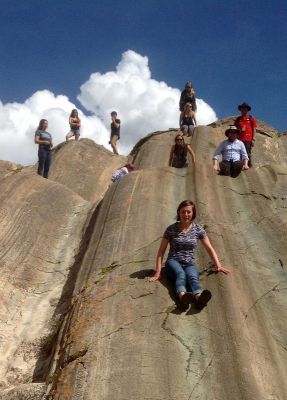
Once on the ground, everyone on the plane applauded. We soon met up with our guide, Amadeo Valer Farfán.
Our first two stops were Tambomachay and Puka Pukara, archaeological sites associated with the Incas. Tambomachay consists of a series of aqueducts, canals and waterfalls that run through terraced rocks. The function of the site isn’t known for certain: it may have served as a military outpost guarding the approaches to Cusco, as a spa resort for the Incan political elite, or both.
Then we visited Saqsayhuaman, once home to the Incas’ temple of the sun and, later, the site of a fierce battle between the Spanish conquistadors and Manco Inca’s army. The stonework, with precise fittings, is among the finest (and largest — one stone placed in a wall weighs more than 300 tons). During our walk at the site, many of the students tried out a set of natural rock slides and passed through a dark cave.
That afternoon we enjoyed a presentation on ancestral music by Juan Carlos Mamani, whose performance name is Willcanina (Quechua for “sacred fire”); and Jorge Callata, whose stage name is Kuntur (Quechua for “condor”). They are members of the group Pachacutec.
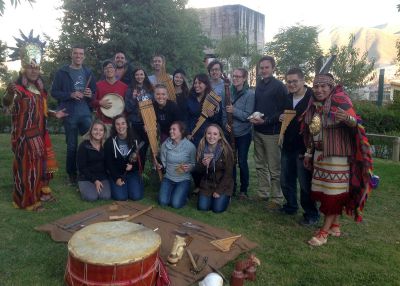
They played on the lawn at the Sol de Oro hostel, summoning up sounds of wind, water and fire while playing instruments made of ceramic, shells, bones and stone.
We were fortunate to spend the next two nights, a Saturday and a Sunday, in the homes of Mennonites from Lucre and Huacarpay.
Lucre and Huacarpay are located nearly an hour by bus from downtown Cusco off of a two-lane highway that passes through towns famous for pan chuta, or a sweet bread that tastes like anis (Oropesa); cuy, or guinea pig (Tipón); and chicharrón, or fried pork (Saylla). Each town claims a specialty, with dozens of competing shops along the road. We stopped in Oropesa to pick up bread to share with our host families, arriving in Huacarpay and Lucre just as the sun was going down.
